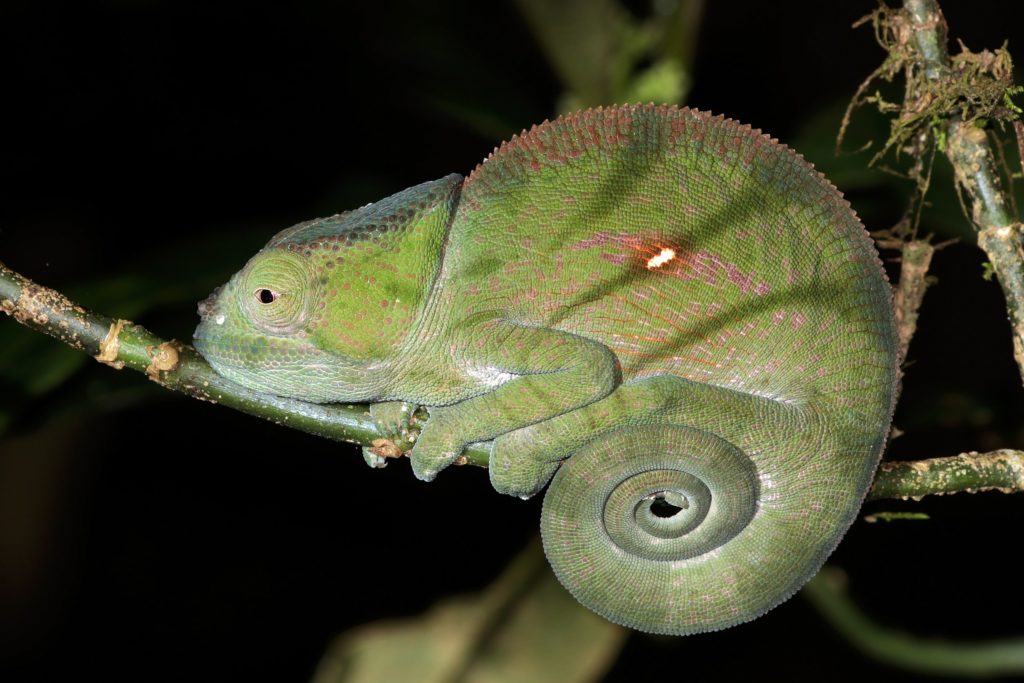Parson’s chameleon is a large species of chameleon in the family Chamaeleonidae. The species is endemic to isolated pockets of humid primary forests in eastern and northern Madagascar. It is listed in CITES Appendix II, meaning that trade in this species is regulated. While most chameleon species from Madagascar cannot be legally exported, a limited number of Parson’s chameleons can be legally exported each year from their native country.

Parson’s chameleon is the largest species of all extant chameleons. This species exceeds 60 cm in total length at maturity, with snout-vent measures averaging 20 – 30 cm. This species may weigh upwards of 700 g at maturity. Parson’s chameleon has a Pinnochio-like appearance due to the larger nasal appendages.

The two subspecies of Parson’s chameleon differ slightly in their habitat preferences. Calumma parsonii cristifer mainly occupies primary, or unharvested, forests in the higher mountains and Calumma parsonii parsonii inhabits cooler, less dense forests lower in elevation.

The Parson’s chameleon (C. parsonii) is one of the longest-lived chameleon species with a highest minimum age of 9 years for males and 8 years for females. C. parsonii can reach an exceptionally long lifespan in captivity. Longevity in the wild was estimated at 10 to 12 years and in captivity, animals of 14 years were recorded, which is unique among chameleons. The Parson’s chameleon is particularly susceptible to the pressures posed by both sanctioned and unsanctioned wildlife trade and habitat fragmentation. This susceptibility is mostly attributable to a two-year period of egg incubation and a 3 year development period before reaching sexual maturity.
According to the Internet















